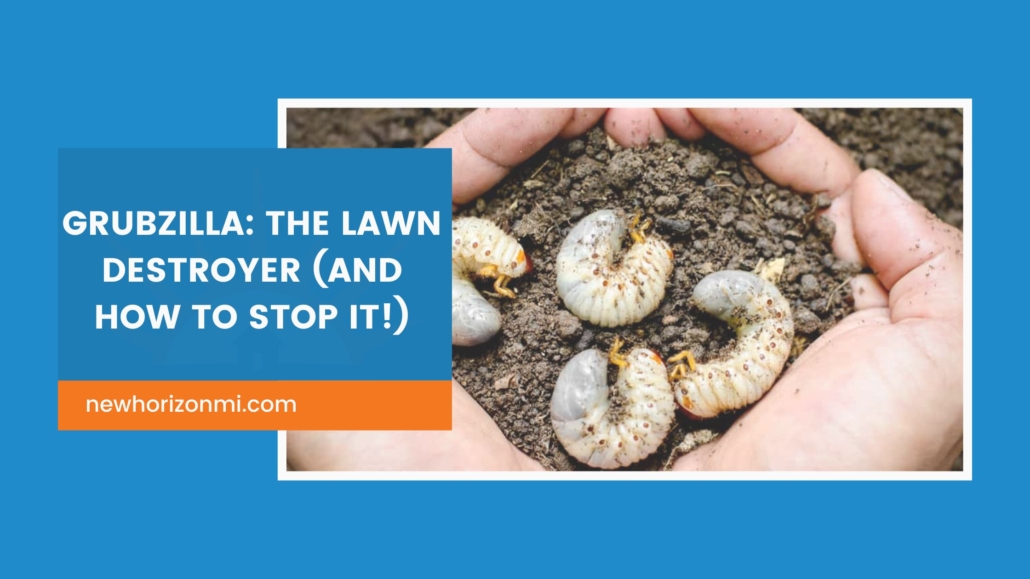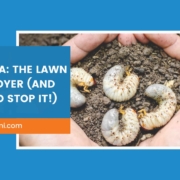🪳Grubzilla: The Lawn Destroyer (and how to stop it!)
If you’ve spotted mysterious brown patches in your yard or noticed birds pecking at your turf like it’s a buffet, you might be dealing with a lawn monster—grubs. These underground pests are the larvae of beetles, and while they might be small, they can cause major damage to Michigan lawns by feeding on grass roots and weakening turf from below.
💥 What Are Grubs and Why Do They Wreck Lawns?
Grubs are the immature form of beetles like Japanese beetles or June bugs. In their larval stage, they burrow into your soil and feast on grass roots. This causes turf to become loose, spongy, and eventually turn brown as it dies off. If you’ve ever walked across your lawn and felt it peel up like carpet—chances are you’ve got grubs.
⏱️ Timing Is Everything: When to Treat for Grubs
The best time to fight grubs depends on their life cycle:
- Spring: If you’re already seeing damage, use a curative insecticide with ingredients like carbaryl or trichlorfon to eliminate existing grubs before they cause more harm.
- Early Summer: This is the ideal time for preventive grub control. Products with imidacloprid (like Merit) or chlorantraniliprole (like Acelepryn) target young, vulnerable grubs before they mature and start feeding heavily.
🌿 Go Natural: Grub Control Without Chemicals
Prefer a more eco-friendly approach? These natural options work over time:
- Beneficial nematodes – Microscopic worms that seek out and kill grubs in the soil.
- Milky spore – A natural bacteria that infects grubs and multiplies in the soil year after year, offering long-term protection.
Natural methods take longer but are safe for pollinators, pets, and the planet.
🌱 Build a Grub-Resistant Lawn
The stronger your lawn, the better it can fend off pests like Grubzilla. Here’s how to fortify your turf:
- Mow high: Keep grass at 3–4 inches to encourage deep root growth.
- Water deeply: Water once or twice a week instead of daily to strengthen roots.
- Aerate annually: Aeration breaks up compacted soil and improves water and nutrient absorption.
🔍 Spot the Signs Early
Regular lawn checks can help you catch grubs before they cause major damage. Look for:
- Turf that feels spongy underfoot
- Brown patches that pull up easily like sod
- Birds, raccoons, or skunks digging in your yard
If you see these signs, don’t wait—early action can prevent a full-blown grub infestation.
🚫 Stop Grubzilla Before It Strikes
Whether you choose chemical treatments, natural solutions, or seasonal prevention, keeping grubs in check is essential for a healthy Michigan lawn.
Need help identifying or treating grub damage?
The New Horizon lawn care team is here to help!
📞 Contact us today to schedule a grub inspection or treatment.





Leave a Reply
Want to join the discussion?Feel free to contribute!